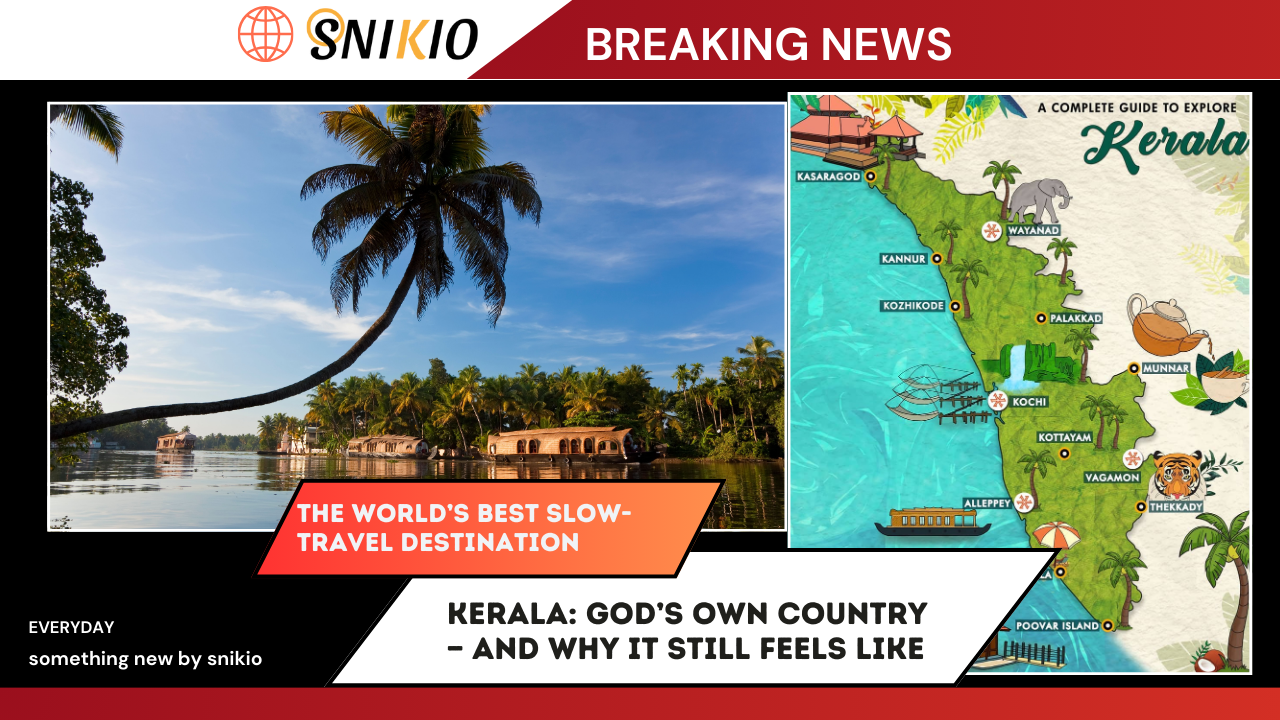
Kerala: God’s Own Country — And Why It Still Feels Like the World’s Best Slow-Travel Destination
By Snikio
Some places make you rush, as if they’re afraid you won’t notice them unless they wave wildly in your face. Kerala is not one of those places. It stands back, quiet, almost knowing. The kind of host who has already laid the table — backwaters shimmering under a lazy afternoon sun, tea slopes folding into the clouds, beaches stretching so far you lose track of where the land ends.
It’s been called God’s Own Country so many times that the phrase should have worn thin by now. But here, it still has a pulse. Six hundred kilometres of Arabian Sea coastline that hums softly at your feet. Coconut palms that sway like they’re applauding you just for turning up. Tea gardens rolling endlessly, as though someone painted green into the horizon and forgot to stop. And a culture that somehow keeps yesterday alive without locking the door to tomorrow.
Kerala isn’t just a dot on the best places to visit in the world list. It’s living proof that slow travelling isn’t a travel style — it’s an entirely different way of breathing.
Munnar — The Queen Who Wears a Green Crown
Munnar doesn’t arrive in your lap. She waits in the wings, letting you wander in on your own terms. At 1,600 metres above sea level, the air is sharp but kind — the sort that makes you want to take long, deliberate breaths. Morning mist drapes itself over 80,000 hectares of tea plantations, sliding into every curve and ridge like cream across green velvet. You don’t gasp all at once. Her beauty seeps in, slow and steady, like rain finding its way into thirsty earth.
A cup of tea here feels less like a drink and more like a page slipped out of an old travel book — the kind that still carries the faint scent of damp leaves and a long-forgotten wooden cupboard. Just beyond, Eravikulam National Park keeps its quiet watch, sheltering the shy Nilgiri Tahr and the famously stubborn Neelakurinji flowers, which appear only once every 12 years, as if nature itself enjoys keeping a secret.
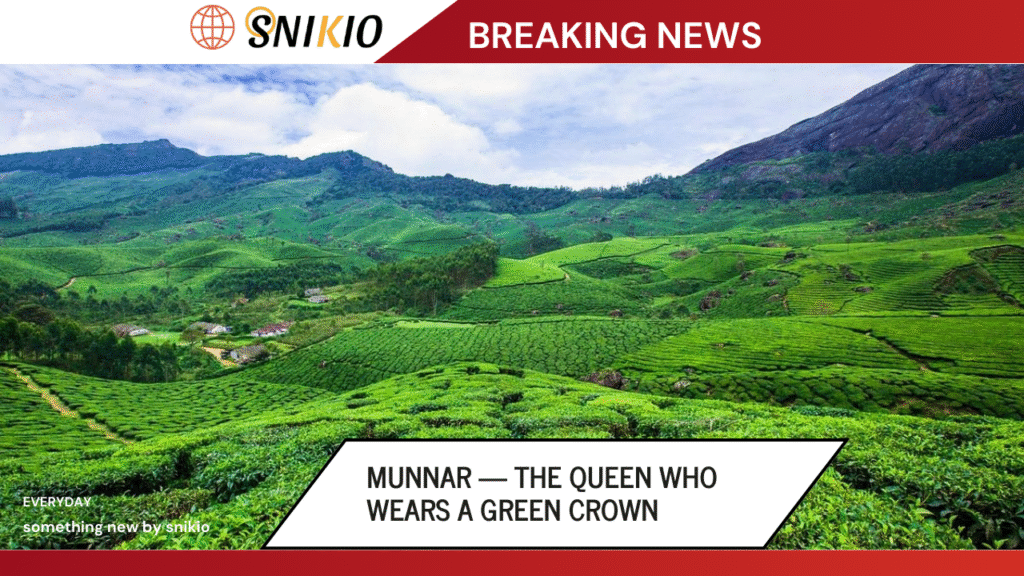
Mattupetty Dam, framed by gentle hills, does offer boating — but what you remember later is the silence. The Tea Museum, with its 100-year-old machinery, feels like flipping back to a chapter you didn’t know you’d missed, steam curling around you like punctuation.
Reporter’s Note: The sunrise from Top Station doesn’t just light the sky. It stops the clock. Bring something warm — the cold here has a way of settling in your bones.
Alleppey — Where the Water Writes the Map
If Kerala were a travel book, Alleppey would be the chapter you read slowly, tracing every line.
Nine hundred kilometres of waterways weave through here, turning it into the backwater capital — a map drawn by water, not ink. UNESCO might call it Asia’s top water tourism destination; to locals, it’s simply where life floats.
Houseboats here aren’t mere accommodation. They’re moving moods. Some are modest — wooden shells that creak underfoot, a lone fan murmuring overhead. Others are grand floating suites where dinner appears under a sky so full of stars you wonder if the river stole the night from the land.
Prices drift between ₹8,000 and ₹50,000 a night — not for square footage, but for the distance they take you from the life you left ashore.
Vembanad Lake could fool you into thinking it’s the sea, especially when it roars during the Nehru Trophy Boat Race — oars rising and falling like a single heartbeat, water spraying in applause, the banks trembling with voices. Kumarakom Bird Sanctuary, quieter, stages its own show — Siberian cranes arriving each winter without maps, without fanfare.
Personal Memory: I once sat alone on a houseboat deck with a Kerala Sadya balanced in my lap. I ate with my fingers, the flavours pulling me into the moment, as the sun sank into the lake like a page closing in a beloved travel guide.
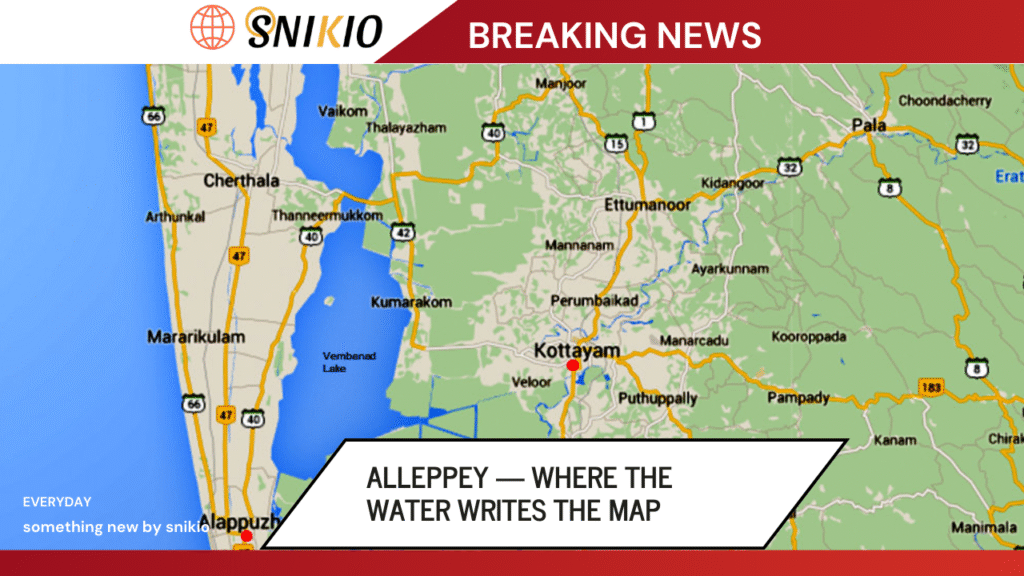
Kochi — Where the World Walked In and Never Quite Left
Kochi has been welcoming visitors for over six centuries — Arabs, Chinese, Dutch, Portuguese, the British — each leaving something behind. That’s why it’s a tour guide’s dream: every corner is holding a story it’s just waiting to tell.
Fort Kochi’s Chinese fishing nets sway like patient giants. The Dutch Palace and St. Francis Church breathe of empires and journeys. Jew Town still keeps India’s oldest active synagogue, its antique shops full of objects that feel like they’ve been waiting for you to pick them up.
By evening, Marine Drive becomes the city’s common balcony. Families, couples, solo travellers — all leaning on the rail, watching the Arabian Sea turn molten under the sunset. Time stops mattering.
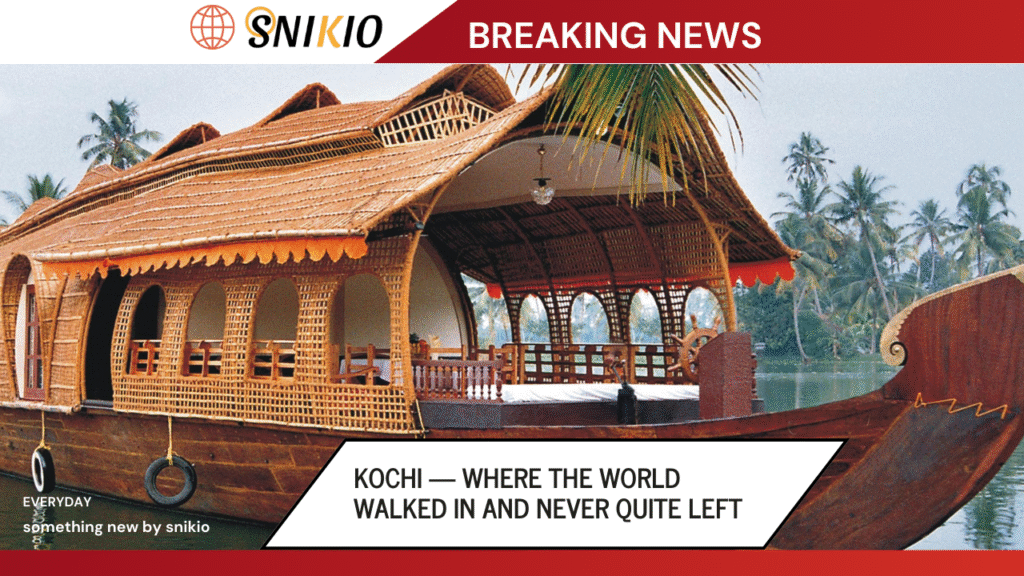
When night settles, the city changes tempo. Kathakali dancers, their faces painted in greens and reds so vivid they almost hum, speak without words — eyes and hands carrying centuries. Across the water, Kalaripayattu fighters stretch into the shape of bows, holding themselves there until the strike. This isn’t performance. This is Kerala showing you its heart.
Wayanad — Green, Wild, and Untamed
Ask any tour guide website or local, and they’ll tell you — if you want to taste Kerala’s wild side, head north to Wayanad.
This is forest country. Part of the UNESCO-listed Western Ghats, more than half its land is a dense green that looks like it’s been here since the first story was told. In Bandipur National Park, patience is your currency — spend enough, and you might meet a tiger’s stare or watch an elephant amble out of the trees like it’s been doing it forever.

Edakkal Caves hold 6,000-year-old carvings scratched into stone — a language without a living translator. Chembra Peak will make you earn it, but at the top sits a heart-shaped lake that seems almost shy, often hiding behind a veil of cloud.
Thiruvananthapuram — Capital with a Soul
This isn’t just a city of traffic signals and government seals. Thiruvananthapuram is part temple town, part coastal retreat, part open-air museum.
The Padmanabhaswamy Temple rises at its centre — Dravidian towers so intricate they look like they’re holding the sky together. Inside are treasures, both in gold and in stories, that could fill an entire world travel guide.
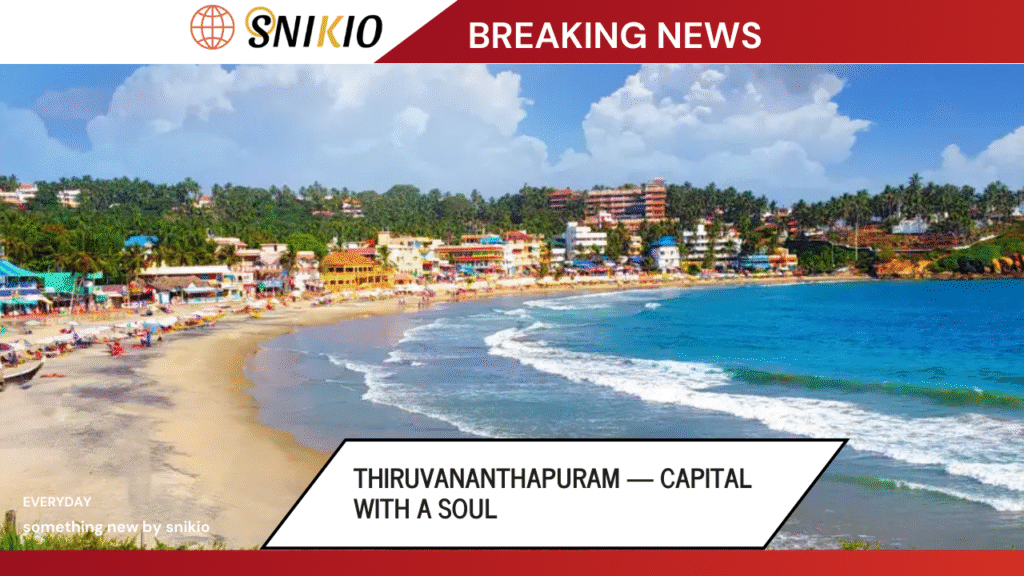
Kovalam Beach unfurls in three golden arcs, each with its own pace — fishermen hauling in nets at dawn, travellers chasing sunsets in the evening, and the smell of frying snacks floating in between. A short drive inland, the Napier Museum rests in its 19th-century frame, holding art, bronze, and music in quiet confidence.
Local Tip: This city doesn’t want to be ticked off a list. Let it slow you down. Taste it, piece by piece, like a long, unhurried meal.
Read also : Top 10 Tourist Attractions in Jaipur – Through the Eyes of a Local Traveller
Final Word
Kerala isn’t just another tourist guide entry. It’s a way of moving through the world. Whether you’re a solo traveller in search of silence, a family chasing safe beaches, or a history lover running your fingers along old stone, this state doesn’t just guide your tour — it reshapes what you thought travel could be.
You could call it a world travel guide condensed into one Indian state. Or you could just call it home for a while. Either way, you’ll leave knowing why it’s still God’s Own Country.






